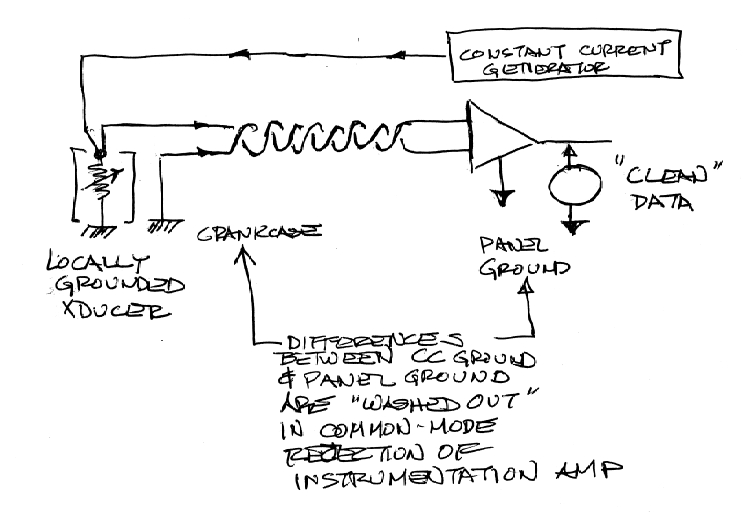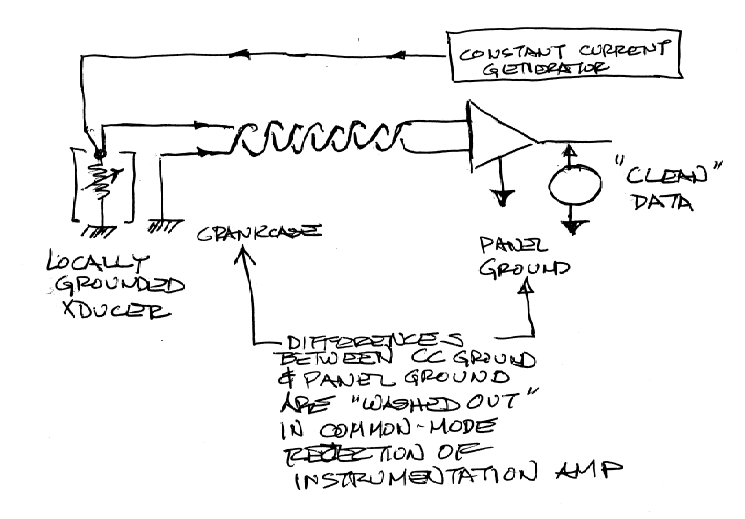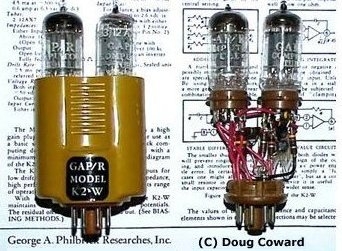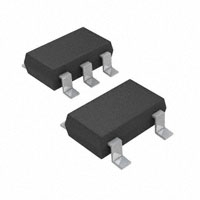 |
Matronics Email Lists
Web Forum Interface to the Matronics Email Lists
|
| View previous topic :: View next topic |
| Author |
Message |
user9253
Joined: 28 Mar 2008
Posts: 1948
Location: Riley TWP Michigan
|
 Posted: Sun Nov 10, 2013 5:59 am Post subject: Minimizing audio interference Posted: Sun Nov 10, 2013 5:59 am Post subject: Minimizing audio interference |
 |
|
I was going to post on VansAirforce in a thread about audio strobe noise, but decided to post here first to make sure that my post is accurate and correct. Let me know if it's not.
Thanks, Joe
Whenever current from separate loads shares the same conductor (wire or metal airframe), the current from one load can affect the current from another load. The interference can be minimized by:
1. Keeping the shared conductors as short as possible
2. Increasing the wire size of the shared conductor
3. Do not share a conductor with more than one load.
4. Keep the positive and negative conductors of the offending circuit together and twisted.
If the microphone jack is not isolated from ground with insulating washers, then part of the mic current flows though the airframe which also carries current from other aircraft loads. This violates rule 3 above. The mic circuit is especially vulnerable because its signal gets amplified.
If the strobe uses the airframe for the negative current path, this also violates rule 3 above. It is better to power the strobe with twisted positive and negative wires instead of using the airframe for the negative conductor.
| | - The Matronics AeroElectric-List Email Forum - | | | Use the List Feature Navigator to browse the many List utilities available such as the Email Subscriptions page, Archive Search & Download, 7-Day Browse, Chat, FAQ, Photoshare, and much more:
http://www.matronics.com/Navigator?AeroElectric-List |
|
_________________
Joe Gores |
|
| Back to top |
|
 |
nuckolls.bob(at)aeroelect
Guest
|
 Posted: Sun Nov 10, 2013 8:01 am Post subject: Minimizing audio interference Posted: Sun Nov 10, 2013 8:01 am Post subject: Minimizing audio interference |
 |
|
At 07:59 AM 11/10/2013, you wrote:
I was going to post on VansAirforce in a thread about audio strobe
noise, but decided to post here first to make sure that my post is
accurate and correct. Let me know if it's not.
Thanks, Joe
Whenever current from separate loads shares the same conductor (wire
or metal airframe), the current from one load can affect the current
from another load. The interference can be minimized by:
1. Keeping the shared conductors as short as possible
Generally speaking, the only conductors that
might be shared by an antagonist and potential
victim are grounds . . . and grounding a victim
onto a location already polluted with antagonistic
perturbations is easily avoided with attention to
the architecture of the ground system. See Figure Z-15
2. Increasing the wire size of the shared conductor
Better yet . . . do not share . . .
3. Do not share a conductor with more than one load.
. . . high on the list of design goals for the
elegantly crafted airframe.
4. Keep the positive and negative conductors of the offending circuit
together and twisted.
Twisting speaks to magnetic coupling between antagonistic
stimulus and potential victims. This coupling mode is
weak. Further, it's unlikely that one finds it mechanically
advantageous to route the wires for antagonists (generally
airframe bundles) along with wires belonging to potential
victims . . . generally situated on the panel.
If the microphone jack is not isolated from ground with insulating
washers, then part of the mic current flows though the airframe which
also carries current from other aircraft loads. This violates rule 3
above. The mic circuit is especially vulnerable because its signal
gets amplified.
Yes
If the strobe uses the airframe for the negative current path, this
also violates rule 3 above. It is better to power the strobe with
twisted positive and negative wires instead of using the airframe for
the negative conductor.
Not a great sin . . . the BIG guys ground nasty
loads to airframes all the time. It's easy to craft
TWO ground systems wherein the second is attentive to
risks to potential victims.
Noises from strobe systems heard on headphones and/or
transmitted signals are almost always conducted by
virtue of poor grounding choices for audio system
wiring and rarely, radiated noises from strobe tubes into
the co-located antennas. Wingtip mounted comm and vor antennas
share this risk.
Some avionics not designed in the spirit and intent
of DO160 suggestions for immunity to bus noises may
also exhibit vulnerability to strobes or other sources.
This condition calls for adding filters to the victim's
14v supply.
Bob . . .
| | - The Matronics AeroElectric-List Email Forum - | | | Use the List Feature Navigator to browse the many List utilities available such as the Email Subscriptions page, Archive Search & Download, 7-Day Browse, Chat, FAQ, Photoshare, and much more:
http://www.matronics.com/Navigator?AeroElectric-List |
|
|
|
| Back to top |
|
 |
mrspudandcompany(at)veriz
Guest
|
 Posted: Sun Nov 10, 2013 8:53 am Post subject: Minimizing audio interference Posted: Sun Nov 10, 2013 8:53 am Post subject: Minimizing audio interference |
 |
|
| Quote: | 3. Do not share a conductor with more than one load.
. . . high on the list of design goals for the
elegantly crafted airframe.
|
Am I right in assuming that this refers to properly
fused wires from one of the busses and does not
include the fat wires wich carry most if not all the
loads in the aircraft.
Roger
--
Do you have a slow PC? Try a Free scan http://www.spamfighter.com/SLOW-PCfighter?cid=sigen
| | - The Matronics AeroElectric-List Email Forum - | | | Use the List Feature Navigator to browse the many List utilities available such as the Email Subscriptions page, Archive Search & Download, 7-Day Browse, Chat, FAQ, Photoshare, and much more:
http://www.matronics.com/Navigator?AeroElectric-List |
|
|
|
| Back to top |
|
 |
nuckolls.bob(at)aeroelect
Guest
|
 Posted: Sun Nov 10, 2013 11:17 am Post subject: Minimizing audio interference Posted: Sun Nov 10, 2013 11:17 am Post subject: Minimizing audio interference |
 |
|
At 10:52 AM 11/10/2013, you wrote:
<mrspudandcompany(at)verizon.net>
3. Do not share a conductor with more than one load.
. . . high on the list of design goals for the
elegantly crafted airframe.
Am I right in assuming that this refers to
properly fused wires from one of the busses and does
not include the fat wires wich carry most if not all
the loads in the aircraft.
Obviously, everything in the airplane
requiring power and ground will have
a lot of conductors in common.
It's known that some accessories tend to
be antagonists (high currents, noisy,
trashy voltage transients, strong RF
emitters, etc.) while other things tend
to be potential victims (stuff that processes
tiny signals).
We're getting off into the weeds with the
'shared conductors' terminology. When it comes
to power distribution, all things
electric 'share' conductors with each other.
DO-160 or similar qualification protocols suggest
means by which the most vulnerable of victims
can get power from the noisiest of busses with
little risk of difficulty.
99% of noise problems are founded on
a very limited range of installation issues
NONE of which have to do with twisting feeders,
co-location of coax cables in wire bundles,
or failure to include any sort of 'filter' on
either a victim or antagonist . . .
We've discussed the high order probabilities for
noise in either transmitted or received signals
when victim grounds that should be centralized
on the panel get tied down somewhere else.
A second order risk is seen when levels of
transmitted RF rise to unusual levels in the
vicinity of tha panel. This condition can present
when the antenna is too close to the equipment
installed . . . or a coax shield has detached
in a connector causing the entire feedline to
become a radiator.
"Shared conductors" is not a good way to talk
about a noise issue. You have a victim, an
antagonist and a PROPAGATION MODE. Breaking
the propagation mode is the path to noise-free
Nirvana.
Bob . . .
| | - The Matronics AeroElectric-List Email Forum - | | | Use the List Feature Navigator to browse the many List utilities available such as the Email Subscriptions page, Archive Search & Download, 7-Day Browse, Chat, FAQ, Photoshare, and much more:
http://www.matronics.com/Navigator?AeroElectric-List |
|
|
|
| Back to top |
|
 |
user9253
Joined: 28 Mar 2008
Posts: 1948
Location: Riley TWP Michigan
|
 Posted: Sun Nov 10, 2013 7:46 pm Post subject: Re: Minimizing audio interference Posted: Sun Nov 10, 2013 7:46 pm Post subject: Re: Minimizing audio interference |
 |
|
| Quote: | "Shared conductors" is not a good way to talk
about a noise issue. |
What if we say that audio signals should not share conductors with other loads? An audio signal is unlikely to share a positive 12 volt wire. But many audio signals use ground as a common path in their circuit. A problem arises when other loads share the same ground conductor as the audio circuit.
Joe
| | - The Matronics AeroElectric-List Email Forum - | | | Use the List Feature Navigator to browse the many List utilities available such as the Email Subscriptions page, Archive Search & Download, 7-Day Browse, Chat, FAQ, Photoshare, and much more:
http://www.matronics.com/Navigator?AeroElectric-List |
|
_________________
Joe Gores |
|
| Back to top |
|
 |
nuckolls.bob(at)aeroelect
Guest
|
 Posted: Sun Nov 10, 2013 8:27 pm Post subject: Minimizing audio interference Posted: Sun Nov 10, 2013 8:27 pm Post subject: Minimizing audio interference |
 |
|
At 09:46 PM 11/10/2013, you wrote:
| Quote: | --> AeroElectric-List message posted by: "user9253" <fransew(at)gmail.com>
> "Shared conductors" is not a good way to talk
> about a noise issue.
What if we say that audio signals should not share conductors with other loads? An audio signal is unlikely to share a positive 12 volt wire. But many audio signals use ground as a common path in their circuit. A problem arises when other loads share the same ground conductor as the audio circuit.
Joe |
"Audio signals" are not "loads". All devices
in the airplane share a common 12v supply bus.
Eventually, ALL grounds come together too.
Study up on the 'ground loop' phenomenon illustrated
in part here.
http://tinyurl.com/6w87rvb
The design task is to re-ground those devices
marked
[img]cid:.0[/img]
such that their shared grounds do not inject
noises. Everybody needs a ground that's
ultimately common with all other grounds.
It's WHERE the grounds are placed and
how they come together that produces the
recipe for success.
In the targets we used to build at Beech
there were three ground systems. Power,
analog and digital. Just as everything
comes to ground at the forest of tabs in
Figure Z-15, so too did all the grounds
in the target come to a common point in the
power distribution box . . . but what happened
to them along the way determines their
probability of offering in ingress point
for noise into a potential victim.
Bob . . .
Bob . . .
| | - The Matronics AeroElectric-List Email Forum - | | | Use the List Feature Navigator to browse the many List utilities available such as the Email Subscriptions page, Archive Search & Download, 7-Day Browse, Chat, FAQ, Photoshare, and much more:
http://www.matronics.com/Navigator?AeroElectric-List |
|
| Description: |
|
| Filesize: |
8.57 KB |
| Viewed: |
7740 Time(s) |

|
|
|
| Back to top |
|
 |
user9253
Joined: 28 Mar 2008
Posts: 1948
Location: Riley TWP Michigan
|
 Posted: Mon Nov 11, 2013 6:30 am Post subject: Re: Minimizing audio interference Posted: Mon Nov 11, 2013 6:30 am Post subject: Re: Minimizing audio interference |
 |
|
I like it that Z15-3.1 shows not only the right way, but also the wrong way to ground devices. I understand that earphones and microphones should not be grounded locally, but should only be grounded at the panel end (intercom or radio).
I am a little confused with the engine sensors. Grounding might be different for different types of sensors and their display (EMS or steam gauge). Some sensors are grounded automatically by nature of their construction and mounting. But for sensors that have isolated ground, I assume that the ground wire should terminate at the EMS or display device and not at the engine case. Of course always follow the manufactures installation instructions.
Joe
| | - The Matronics AeroElectric-List Email Forum - | | | Use the List Feature Navigator to browse the many List utilities available such as the Email Subscriptions page, Archive Search & Download, 7-Day Browse, Chat, FAQ, Photoshare, and much more:
http://www.matronics.com/Navigator?AeroElectric-List |
|
_________________
Joe Gores |
|
| Back to top |
|
 |
nuckolls.bob(at)aeroelect
Guest
|
 Posted: Mon Nov 11, 2013 11:07 am Post subject: Minimizing audio interference Posted: Mon Nov 11, 2013 11:07 am Post subject: Minimizing audio interference |
 |
|
At 08:30 AM 11/11/2013, you wrote:
| Quote: | --> AeroElectric-List message posted by: "user9253" <fransew(at)gmail.com>
I like it that Z15-3.1 shows not only the right way, but also the wrong way to ground devices. I understand that earphones and microphones should not be grounded locally, but should only be grounded at the panel end (intercom or radio).
I am a little confused with the engine sensors. Grounding might be different for different types of sensors and their display (EMS or steam gauge). Some sensors are grounded automatically by nature of their construction and mounting. |
Yes. Many oil pressure, oil temperature, CHT, EGT sensors are
guilty of 'local grounding' . . . and for the manner in which they
were originally intended to be used . . . it didnt' matter.
| Quote: | | But for sensors that have isolated ground, I assume that the ground wire should terminate at the EMS or display device and not at the engine case. Of course always follow the manufactures installation instructions. |
Oh, absolutely. But absent a end-to-end design goal,
one has to play the DIY integration game. One useful
way to deal with a locally grounded signal source
looks like this:
[img]cid:.0[/img]
There are low cost integrated circuits that do the
task of making remote voltage measurements across
hostile environments. Alternatively, one can take all
grounds for the instrument to the crankcase. The same
game is played in audio systems. I did the specification
for design of an intercom system on the Lears that
coupled all stations together by way of a transformer
coupled, twisted pair . . . Intercoms scattered about
the airplane could be grounded locally for power and
control without the worry of noises on the ground-
differences finding their way into the audio.
Bob . . .
| | - The Matronics AeroElectric-List Email Forum - | | | Use the List Feature Navigator to browse the many List utilities available such as the Email Subscriptions page, Archive Search & Download, 7-Day Browse, Chat, FAQ, Photoshare, and much more:
http://www.matronics.com/Navigator?AeroElectric-List |
|
| Description: |
|
| Filesize: |
123.9 KB |
| Viewed: |
7707 Time(s) |

|
|
|
| Back to top |
|
 |
bob.verwey(at)gmail.com
Guest
|
 Posted: Mon Nov 11, 2013 11:44 pm Post subject: Minimizing audio interference Posted: Mon Nov 11, 2013 11:44 pm Post subject: Minimizing audio interference |
 |
|
Bob N, for us neophytes, please enlighten us on the triangular device in your sketch.
Best...
Bob Verwey
IO 470 A35 Bonanza ZU-DLW
On 11 November 2013 21:05, Robert L. Nuckolls, III <nuckolls.bob(at)aeroelectric.com (nuckolls.bob(at)aeroelectric.com)> wrote:
| Quote: | At 08:30 AM 11/11/2013, you wrote:
| Quote: | --> AeroElectric-List message posted by: "user9253" <fransew(at)gmail.com (fransew(at)gmail.com)>
I like it that Z15-3.1 shows not only the right way, but also the wrong way to ground devices. I understand that earphones and microphones should not be grounded locally, but should only be grounded at the panel end (intercom or radio).
I am a little confused with the engine sensors. Grounding might be different for different types of sensors and their display (EMS or steam gauge). Some sensors are grounded automatically by nature of their construction and mounting. |
Yes. Many oil pressure, oil temperature, CHT, EGT sensors are
guilty of 'local grounding' . . . and for the manner in which they
were originally intended to be used . . . it didnt' matter.
| Quote: | | But for sensors that have isolated ground, I assume that the ground wire should terminate at the EMS or display device and not at the engine case. Of course always follow the manufactures installation instructions. |
Oh, absolutely. But absent a end-to-end design goal,
one has to play the DIY integration game. One useful
way to deal with a locally grounded signal source
looks like this:
[img]cid:.0[/img]
There are low cost integrated circuits that do the
task of making remote voltage measurements across
hostile environments. Alternatively, one can take all
grounds for the instrument to the crankcase. The same
game is played in audio systems. I did the specification
for design of an intercom system on the Lears that
coupled all stations together by way of a transformer
coupled, twisted pair . . . Intercoms scattered about
the airplane could be grounded locally for power and
control without the worry of noises on the ground-
differences finding their way into the audio.
Bob . . .
|
| | - The Matronics AeroElectric-List Email Forum - | | | Use the List Feature Navigator to browse the many List utilities available such as the Email Subscriptions page, Archive Search & Download, 7-Day Browse, Chat, FAQ, Photoshare, and much more:
http://www.matronics.com/Navigator?AeroElectric-List |
|
| Description: |
|
| Filesize: |
123.9 KB |
| Viewed: |
7704 Time(s) |

|
|
|
| Back to top |
|
 |
nuckolls.bob(at)aeroelect
Guest
|
 Posted: Tue Nov 12, 2013 7:29 am Post subject: Minimizing audio interference Posted: Tue Nov 12, 2013 7:29 am Post subject: Minimizing audio interference |
 |
|
At 03:43 AM 11/12/2013, you wrote:
Jay is correct. The "operational amplifier" has a rich
history in the evolution of electronics. Check out
the articles on Wikipedia about George Philbrick,
Bob Widlar, Jim Williams, and Bob Pease just to
name a few of the colorful pioneers of the electronic
arts and sciences.
The op-amp comes in many flavors and sizes tailored
to a constellation of tasks. I cut my op-amp teeth about
1962 on this vacuum tube version that sold for a couple hundred
dollars in 2013 money . . .
[img]cid:.0[/img]

I doubt that there were more than a few dozen
products available.
The last op-amp I stuck to a board looked like
a little brick of plastic about the size of a match
head . . .
[img]cid:.1[/img]
. . . and costs about $2. The Digikey site offers
over 30,000 variations on the theme. We've come
a long way baby . . .
Bob . . .
| | - The Matronics AeroElectric-List Email Forum - | | | Use the List Feature Navigator to browse the many List utilities available such as the Email Subscriptions page, Archive Search & Download, 7-Day Browse, Chat, FAQ, Photoshare, and much more:
http://www.matronics.com/Navigator?AeroElectric-List |
|
| Description: |
|
| Filesize: |
88.91 KB |
| Viewed: |
7699 Time(s) |

|
| Description: |
|
| Filesize: |
10.69 KB |
| Viewed: |
7699 Time(s) |

|
|
|
| Back to top |
|
 |
|
|
You cannot post new topics in this forum
You cannot reply to topics in this forum
You cannot edit your posts in this forum
You cannot delete your posts in this forum
You cannot vote in polls in this forum
You cannot attach files in this forum
You can download files in this forum
|
Powered by phpBB © 2001, 2005 phpBB Group
|








